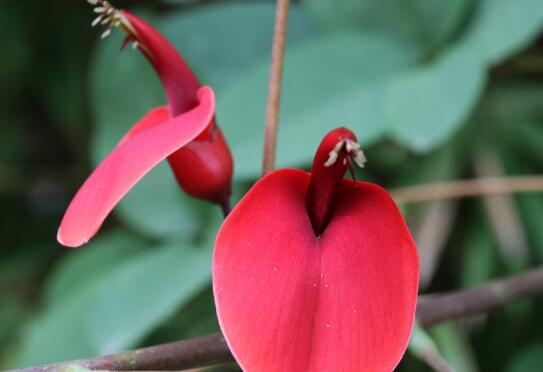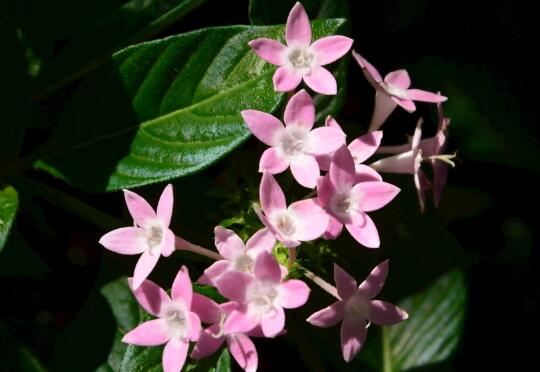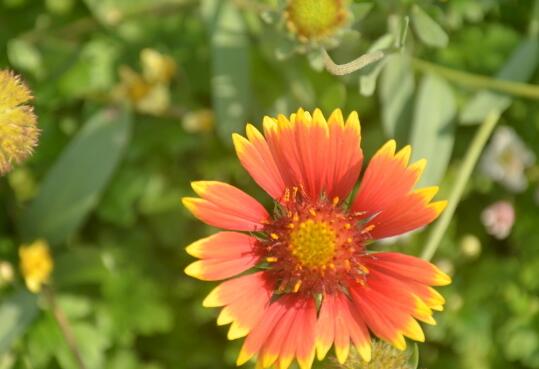What to do with the growing insects of paulownia flowers? pest control of paulownia flowers / 2 insect pests and 4 diseases
When we cultivate paulownia flowers, the last problem we want to encounter is diseases and insect pests. This kind of problem is very harmful to the plant, which will not only affect its ornamental, but also lead to plant death. So what should I do if the paulownia flowers grow into worms? How to control the diseases and insect pests of paulownia flowers? Next, the editor will take you to learn about it.
First, what to do when the paulownia flower grows and find the reason?

If you want to know what to do with paulownia flower worms, first of all, we have to understand what kind of insects grow, so that we can deal with them pertinently, because the treatment methods of each kind of diseases and insect pests are different, and the details are described in detail below. Friends who are troubled in this respect can learn about it.
II. Pest control of paulownia flowers
1. Leafhopper
Leafhopper, a pest that mainly threatens the leaves of paulownia flowers, gradually sucks up the sap in its leaves, resulting in massive loss of nutrients and withering. When this kind of pest occurs on paulownia flowers, many light spots will appear on its leaves, which can be distinguished by this point.
Control methods: in the control of this kind of paulownia flower diseases and insect pests, we can use 1000 times of fenitrothion EC to spray the damaged plants, usually once every 5-7 days, and then completely eliminate this pest after 1-2 times.
two。 Bark moth
This is an insect of the family Cerambycidae, which will eat into the stem of the paulownia flower during the larval stage, which will gradually cause its branches to wither and die, resulting in its inability to blossom normally and, in serious cases, the whole plant.
Control method: in the prevention and control of this kind of paulownia flower diseases and insect pests, we can first prune the eaten branches, and then use 40% omethoate 100-200 times to spray the plant.
3. Leaf spot disease
Leaf spot is a disease caused by fungi, its high incidence period in the spring and autumn every day, so in this period of time we must pay special attention. Paulownia flowers will appear many brown round disease spots on the leaves when this disease occurs, and will gradually spread to the petiole and stem with the passage of time, resulting in plant atrophy and death.
Control method: when we deal with the diseases and insect pests of this kind of paulownia flower, we can use 1000 times of silazole and prochloraz to control it, which is usually sprayed once a week or so, and then it can be cured after 1-2 times.
4. Anthrax
Anthracnose is a disease that mainly threatens the leaves of paulownia flowers. At the onset of the disease, many semicircular spots appear on the tip or edge of the leaves, showing yellowish brown or grayish brown. When the air is too humid, scarlet needle-sized liquid spots will appear on the leaves. It will cause the plant to die gradually over time.
Control methods: for this kind of paulownia flower diseases and insect pests, we can use Guoguang Yintai wettable powder 600-800 times to spray it, generally spray once every 7-10 days, 2-3 times can be cured.
5. Rotten skin disease
Skin rot is a common disease of paulownia flower. The occurrence of this disease is irregular and may occur in every season. Many small black spots will appear on the trunk when the disease occurs, and will gradually spread to the lower part of the tree with the passage of time. Finally, the plant gradually rotted.
Control method: when dealing with the diseases and insect pests of this kind of paulownia flower, we can use a bottle of mother liquid to add 30 kg of water diluent, and then apply it on the plant, generally about 15 days once, 2-3 times can be cured.
6. Mosaic disease
This disease is mainly harmful to the leaves of paulownia flowers. At the beginning of the disease, the leaves will be distorted and yellow stripes will appear. In the later stage, irregular necrotic spots will appear on the leaves. When the disease is serious, it may lead to paulownia flowers not blooming.
Prevention and control: if you want to prevent and cure this disease, you have to do every step at the beginning of breeding. When selecting seed bulbs, we should choose the ones with strong resistance, and in the process of breeding, we must often spray disinfectants to sterilize the plants, and timely supplement the nutrients of paulownia flowers to make it more resistant.
Paulownia pest control, (scientific name: Erythrina variegata Linn.) Leguminosae, paulownia, deciduous trees, about 20m high, dry skin gray, with conical prickles, flowering in March. The pods are beaded and the seeds are red. It is native to the coral reef coast of tropical Asia and Pacific islands. It is the city flower of Quanzhou, China, Miyagoshima City, Japan and the prefecture flower of Okinawa Prefecture.
Paulownia disease and pest control is vulnerable to shell insects during indoor maintenance. The control method can be controlled by spraying plants with 1000-fold solution. If there are few plants in the family, soft brushes and toothpicks can be used to brush and scrape them, or alcohol cotton balls can be used to erase the worms. The second is chemical prevention and control. The suitable period is the initial hatching stage of nymph. 1500 times of 50% phoxim wettable powder can be sprayed during peak egg incubation. At present, drugs for the prevention and control of mature scale insects, such as Tiemike granules (3g in a flowerpot with a diameter of 25cm into 3% Weimudan granule (about 20g in a flowerpot with a diameter of 25cm), can also be sprayed with 1500 times of EC at a speed of 40%. Can achieve good results. Gentleman orchid is allergic to dimethoate, so it can not be used. What is the flower language of paulownia flowers, the legends of paulownia flowers / prosperity
Paulownia flower is a kind of flower plant with high ornamental value, which can be seen in many cities in our country. Like many flowers and plants, it also has its own flower language. What is the flower language about paulownia flowers? What are the legends of paulownia flowers? Next, the editor will take you to learn about it.
First, the flower language of paulownia flowers, prosperous, auspicious and rich
As early as the five dynasties in China, in order to expand the city wall of Quanzhou, many paulownia flowers were planted along the city. later, the paulownia flowers grew up and became as red as fire, so they became well-known at home and abroad as a local feature. later, this plant was designated as the city flower of Quanzhou, so the flower language of paulownia flowers also represents prosperity, auspiciousness and wealth.
II. Legends of paulownia flowers
Legend one
In the old customs of some parts of our country, people used to use the situation of paulownia blossom to predict the annual growth: if the flowering period of the first year is too late and the flowers flourish, then they think that there must be a bumper harvest and prosperity of six animals in the coming year, otherwise the opposite; another saying is that if paulownia sprouts and then blossoms every year, it will be abundant every year, otherwise vice versa. Therefore, paulownia is also known as "Ruitong".
It represents good luck. Because of this, there was a small debate in the Song Dynasty. On one side of the argument is Ding Wei, who came to Quanzhou as a cheap visitor. he very much hopes to see the green leaves of paulownia first to make the grain of Quanzhou rich, so he wrote such a poem: "people in the countryside say that paulownia is rich, and Ye Xianhua is rich in years." So far, I am worried about the people. I only love Qingqing rather than red. "
The other side of the argument is Wang Shipeng, who came to Quanzhou as a county warden. He shares the same wishes as Ding Wei, but he does not believe in the prophecy of flowers or flowers before sprouting. To this end, he also wrote a poem: "at first sight, the branches were green and thick, and suddenly I was surprised that the umbrella was about to burn empty." Flowers are ripe year after year, but people don't like red when they don't know how to do it. " Although there is an argument, it is a good story that has been spread around the world. What a lovely public servant. Lovely flowers.
Legend two
It is said that in order to expand the city wall of Quanzhou, the festival envoy of the five dynasties once planted paulownia all over the city. Later, paulownia grew with luxuriant flowers and red flowers, which became a major feature of Quanzhou, which made Quanzhou famous at home and abroad. Therefore, the paulownia flower has become a symbol of Quanzhou and is designated as the flower of Quanzhou. Its moral is: prosperous, auspicious and rich, full of people's good hopes for the future.
The people of Quanzhou love paulownia flowers and regard them as "auspicious trees". Scholars and poets of all ages have also left many good lines reciting paulownia flowers. There is a poem saying: "when I first saw that the branches were green and thick, suddenly the fire army wanted to burn empty." The magnificent sight of paulownia blossoms can be seen. In places such as Kaiyuan Temple and overseas Chinese Building in Quanzhou City, there are many paulownia flowers planted, and the beautiful Quanzhou city is hidden in the green leaves and red flowers of paulownia.
- Prev

What if the five-star flower grows insects? pest control of the five-star flower / 2 insect pests and 3 diseases
Plant diseases and insect pests are the most unwanted problems in the process of plant growth, and Wuxing flower is no exception. This kind of problem is very harmful to the plant, which will not only affect its beautiful plant shape, but also lead to plant death if it is not treated for a long time. So what should we do if the five-star flower grows worms?
- Next

What to do with the growth of Chrysanthemum morifolium? pest control of Chrysanthemum morifolium / 2 insect pests 2 diseases
When we raise chrysanthemum, the last thing we want to encounter is diseases and insect pests. This kind of problem is very harmful to the plant, which will not only affect the ornamental, but also cause the plant to die. What should we do if the chrysanthemum grows? How to control the diseases and insect pests of Chrysanthemum morifolium
Related
- Fuxing push coffee new agricultural production and marketing class: lack of small-scale processing plants
- Jujube rice field leisure farm deep ploughing Yilan for five years to create a space for organic food and play
- Nongyu Farm-A trial of organic papaya for brave women with advanced technology
- Four points for attention in the prevention and control of diseases and insect pests of edible fungi
- How to add nutrient solution to Edible Fungi
- Is there any good way to control edible fungus mites?
- Open Inoculation Technology of Edible Fungi
- Is there any clever way to use fertilizer for edible fungus in winter?
- What agents are used to kill the pathogens of edible fungi in the mushroom shed?
- Rapid drying of Edible Fungi

